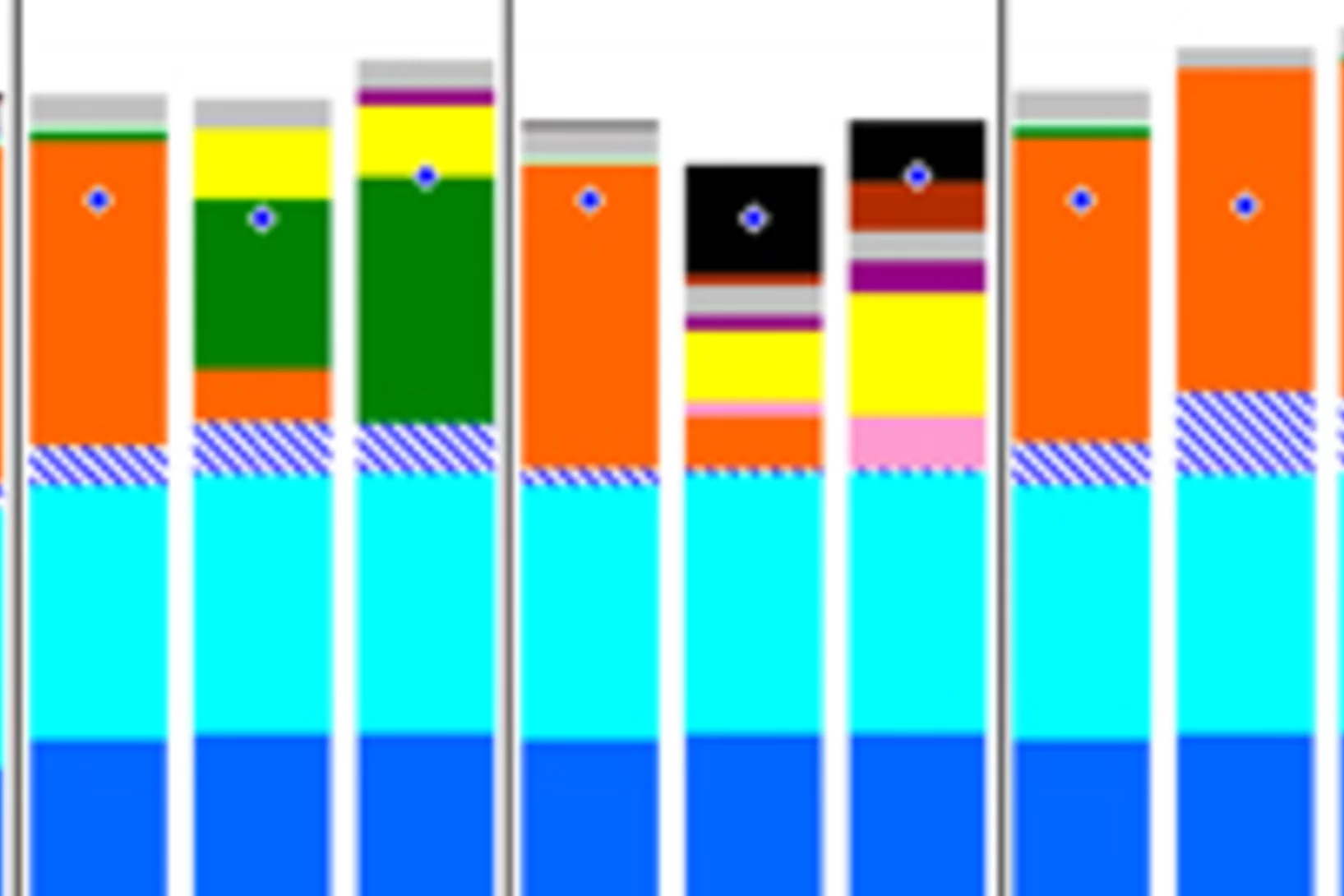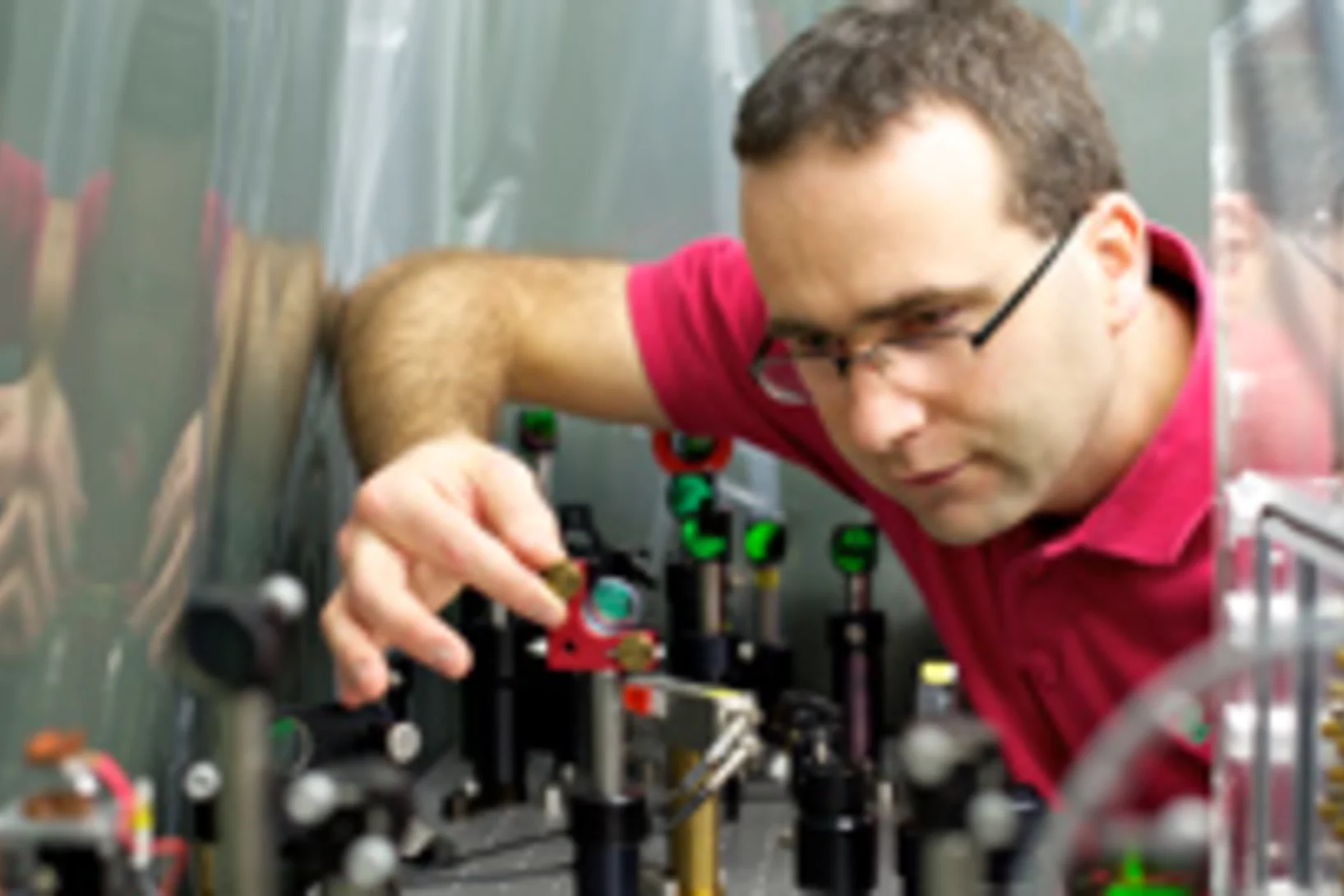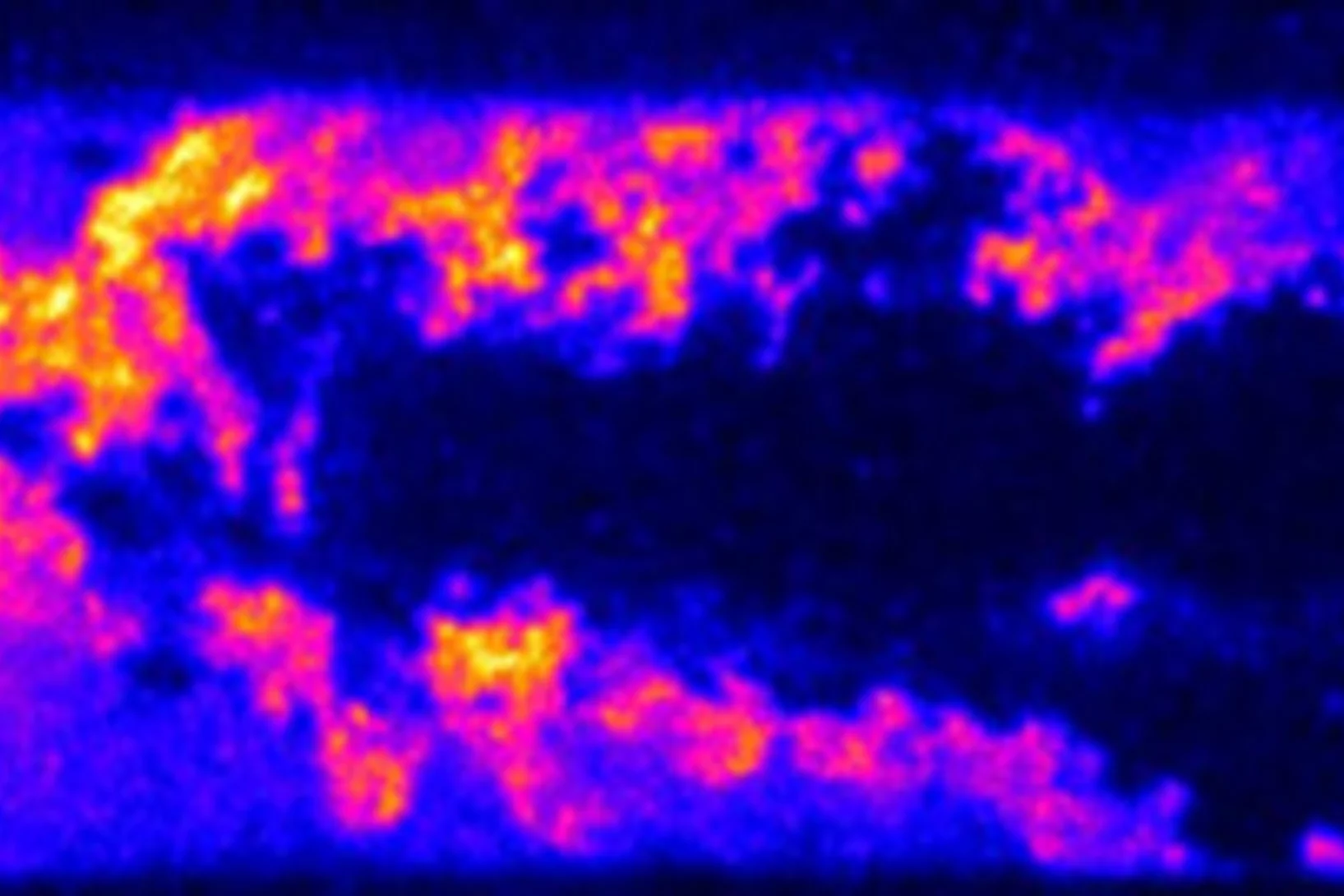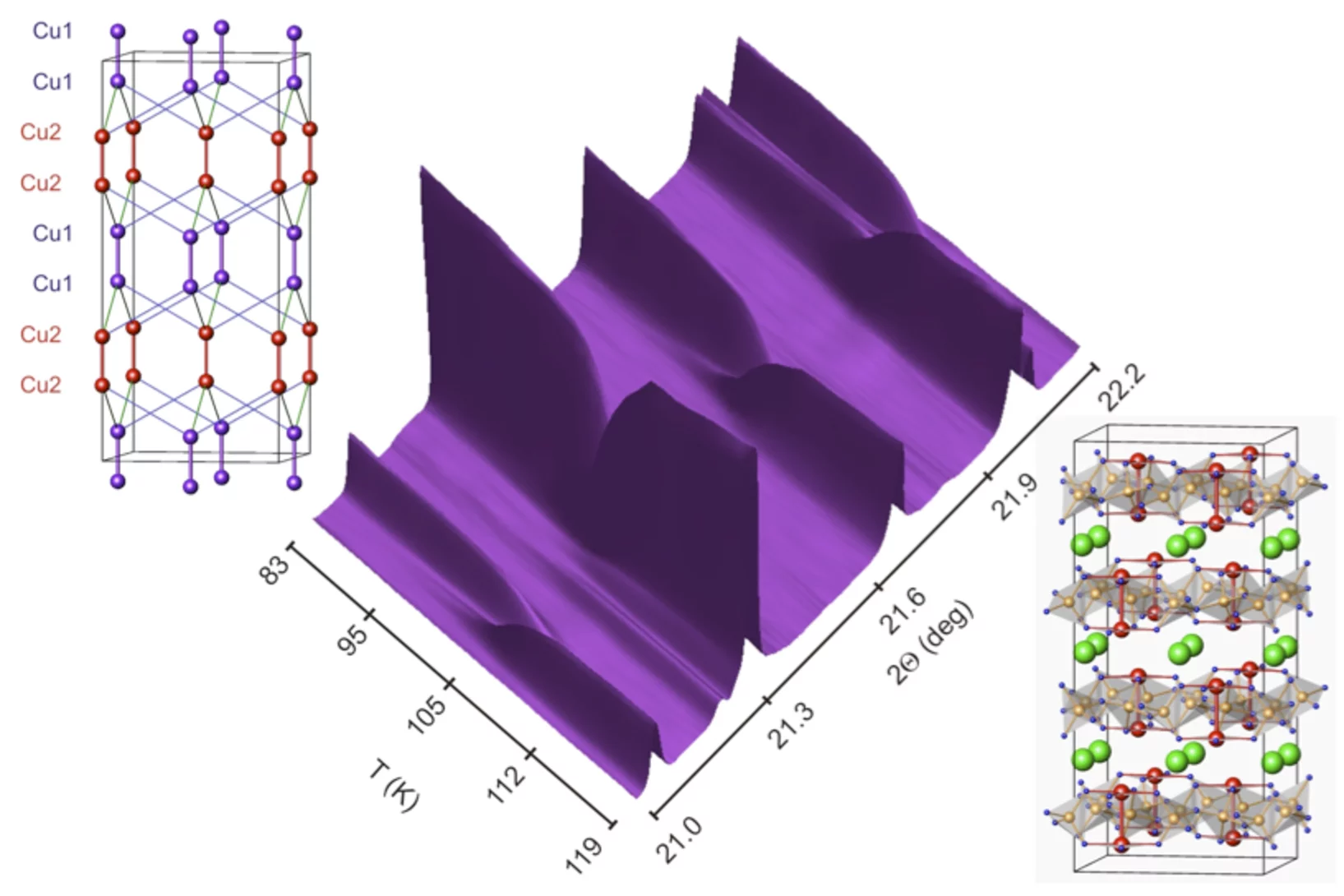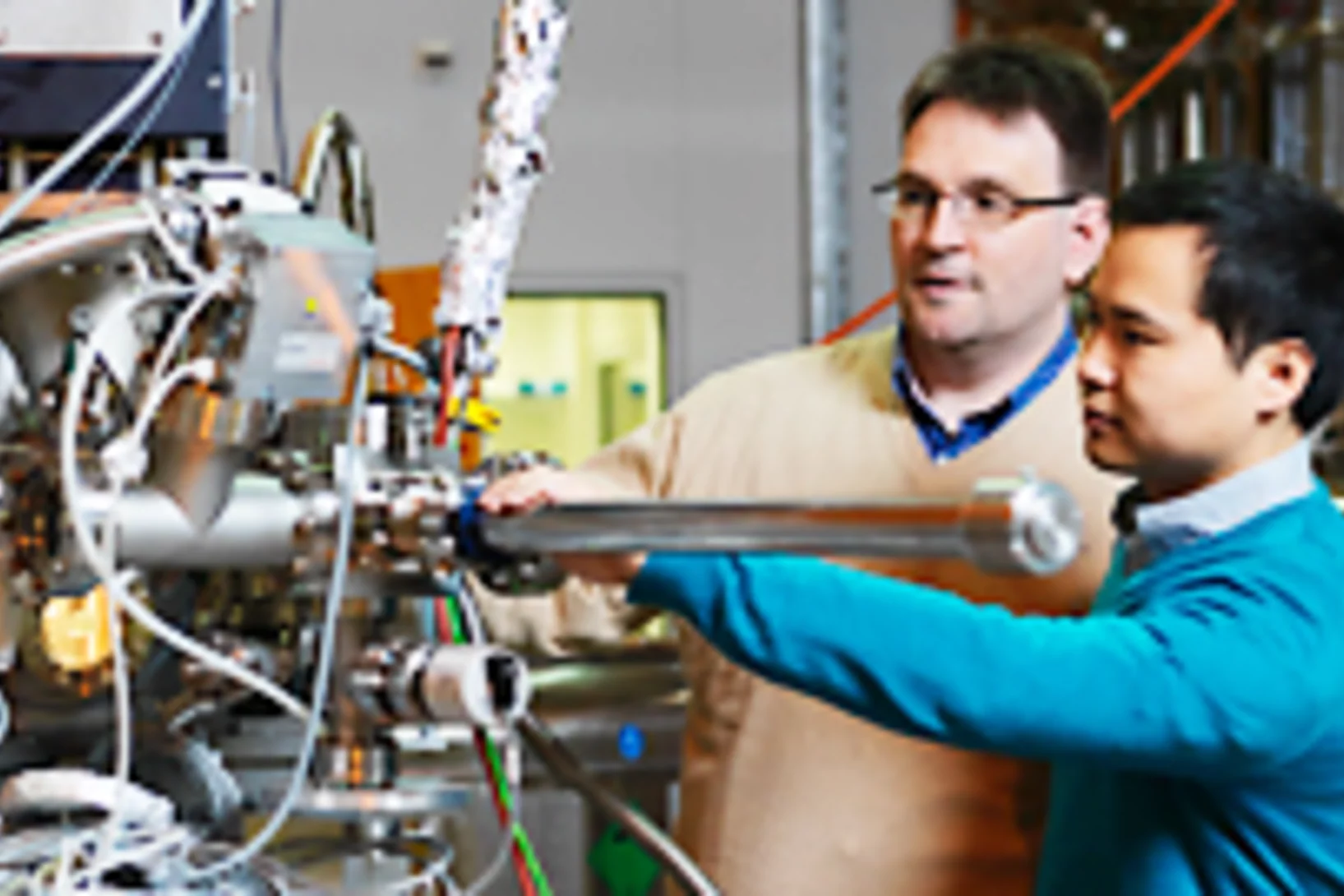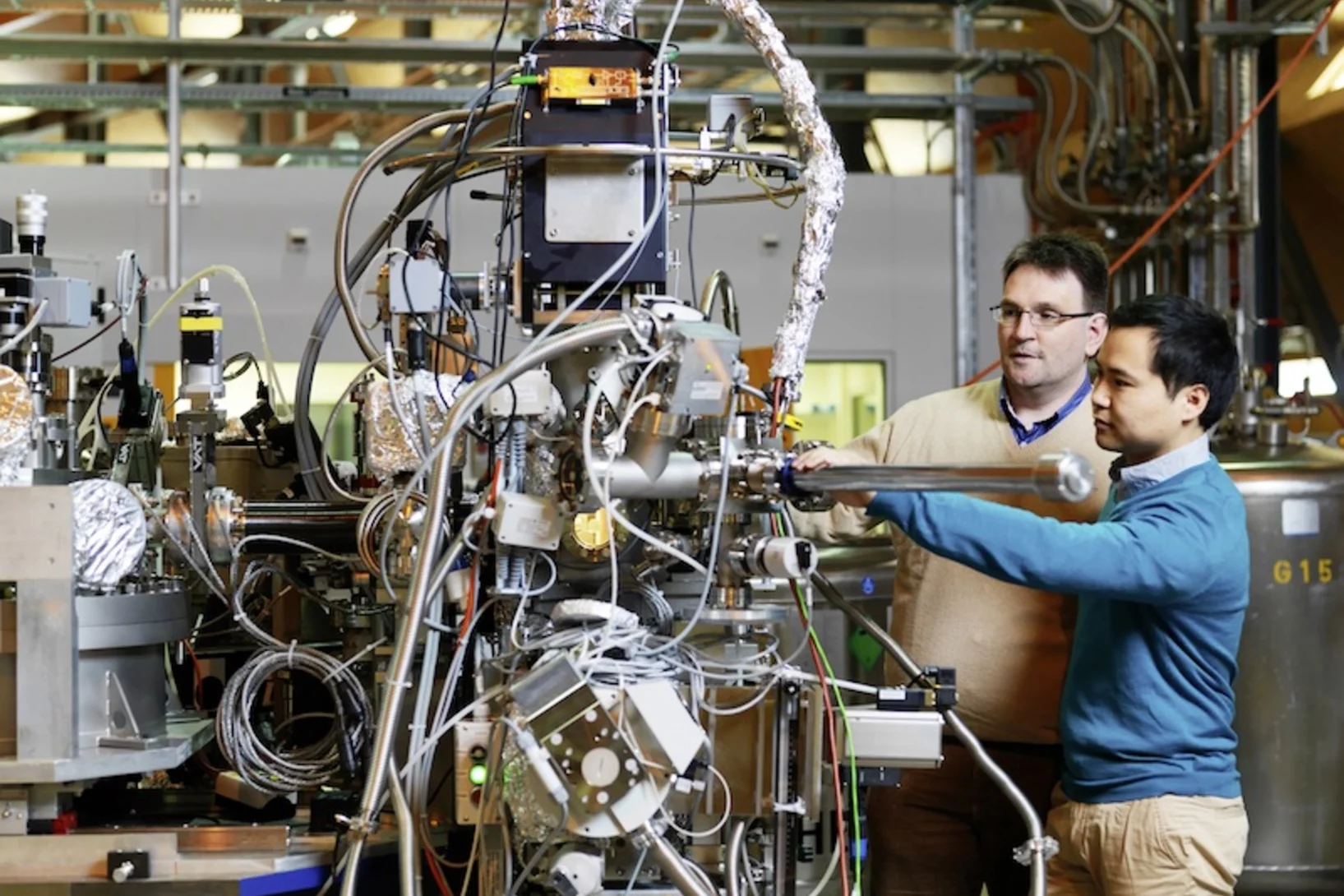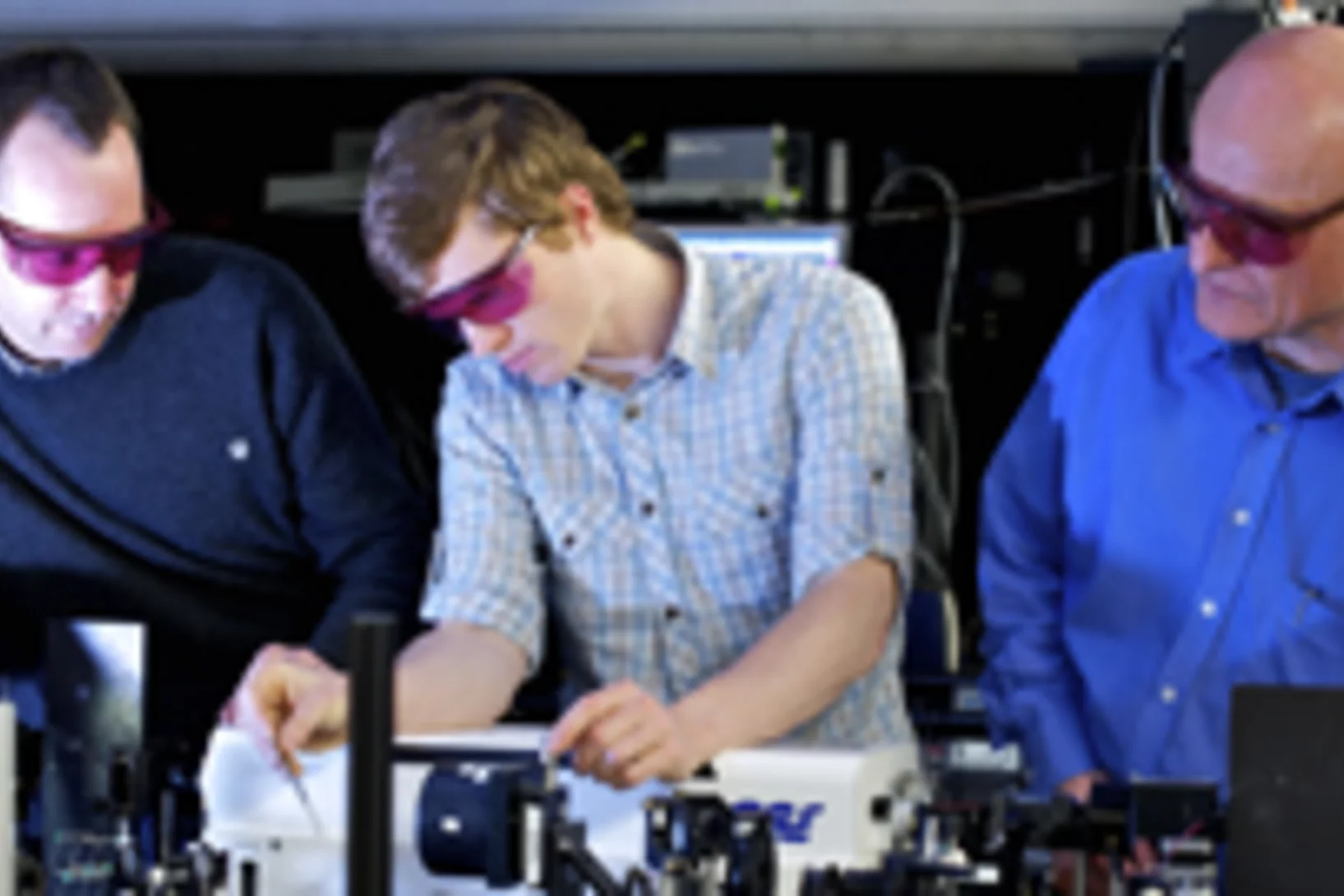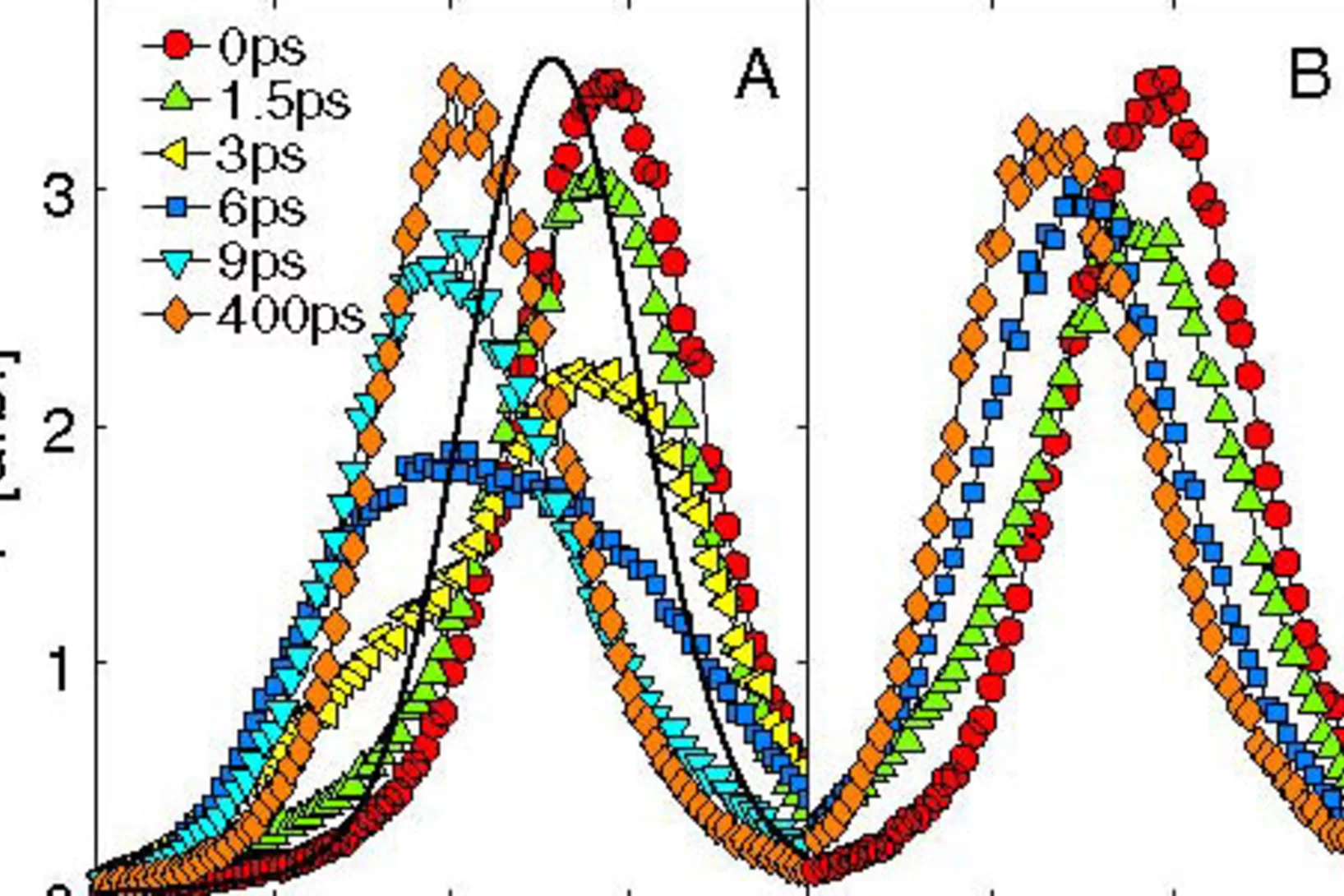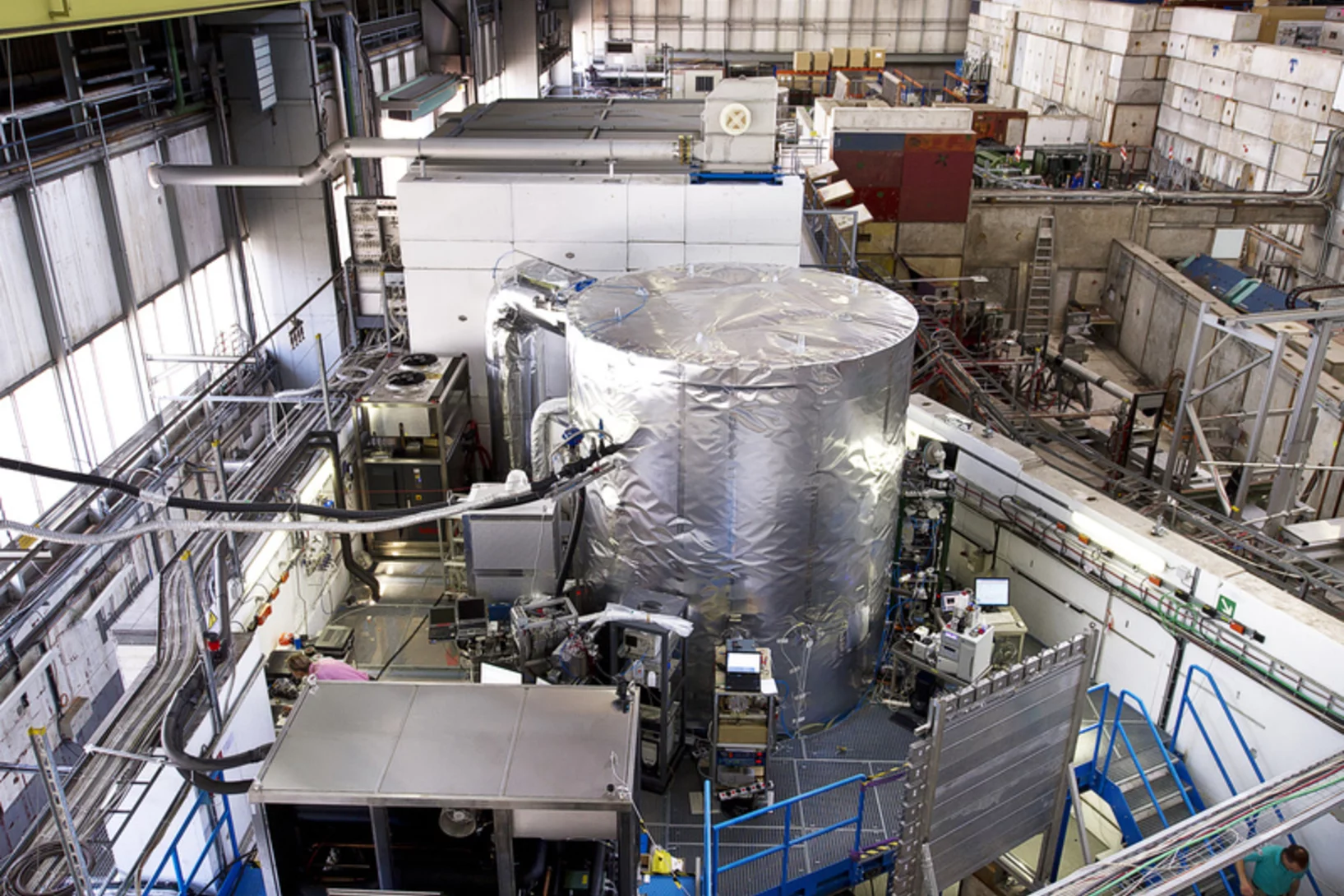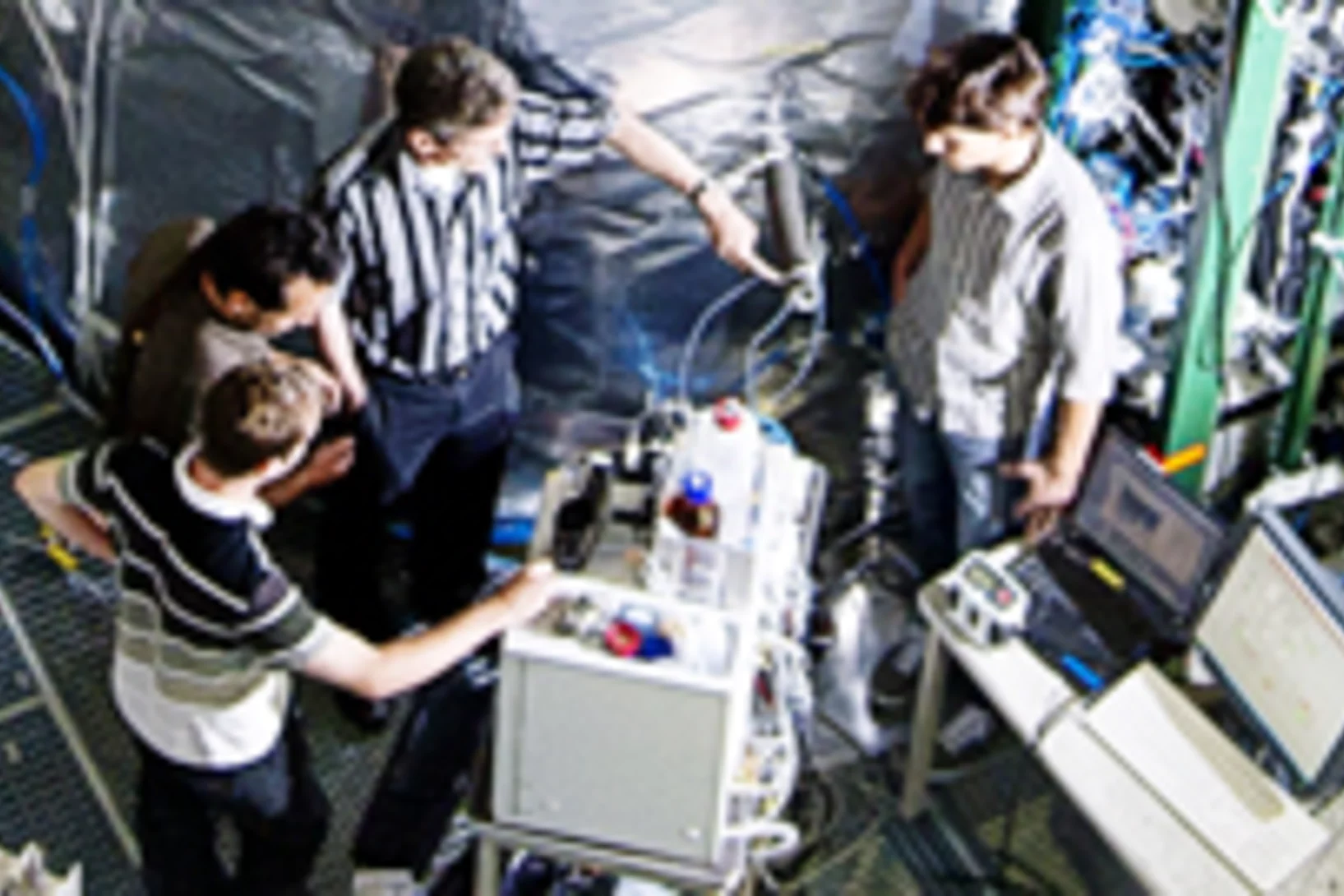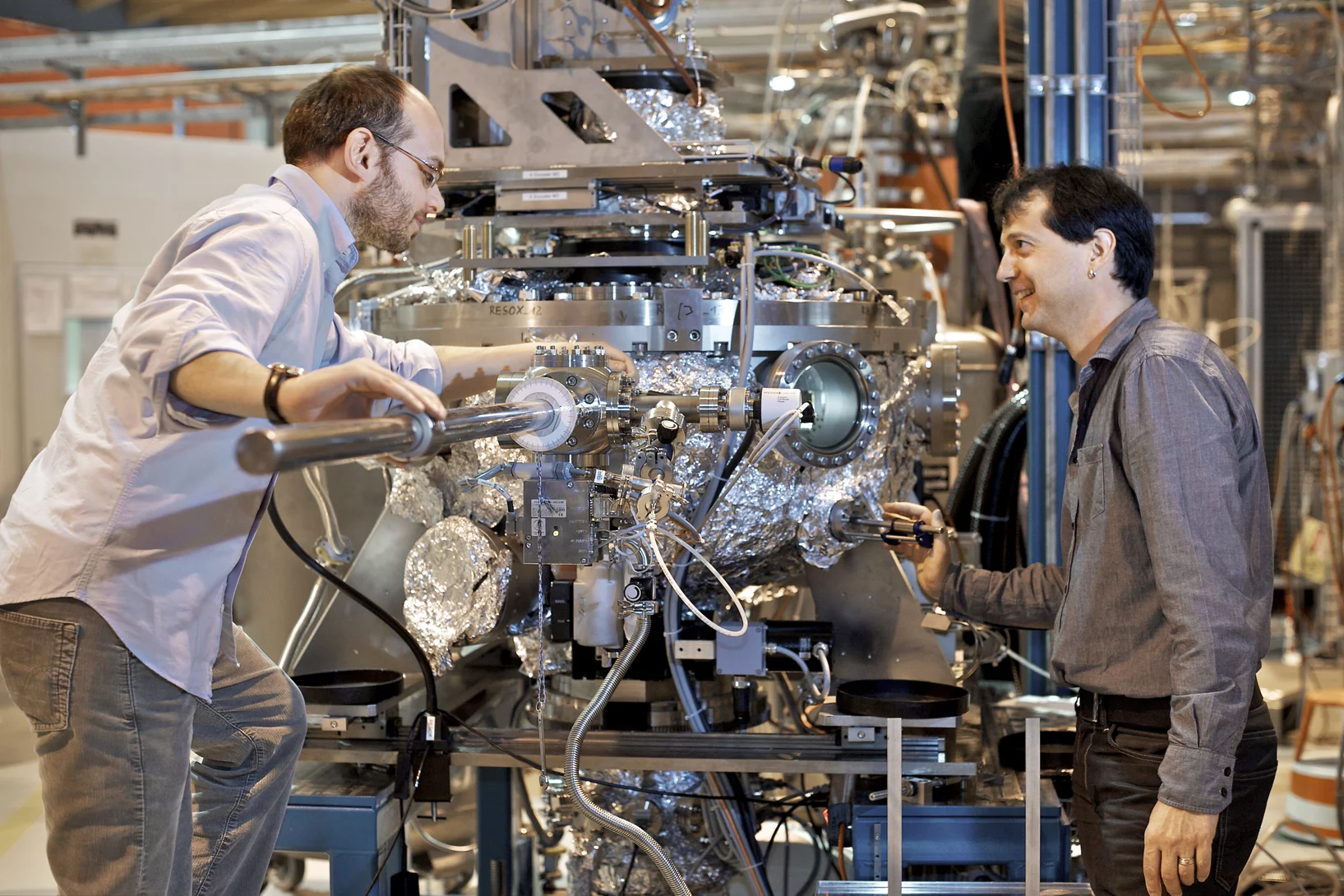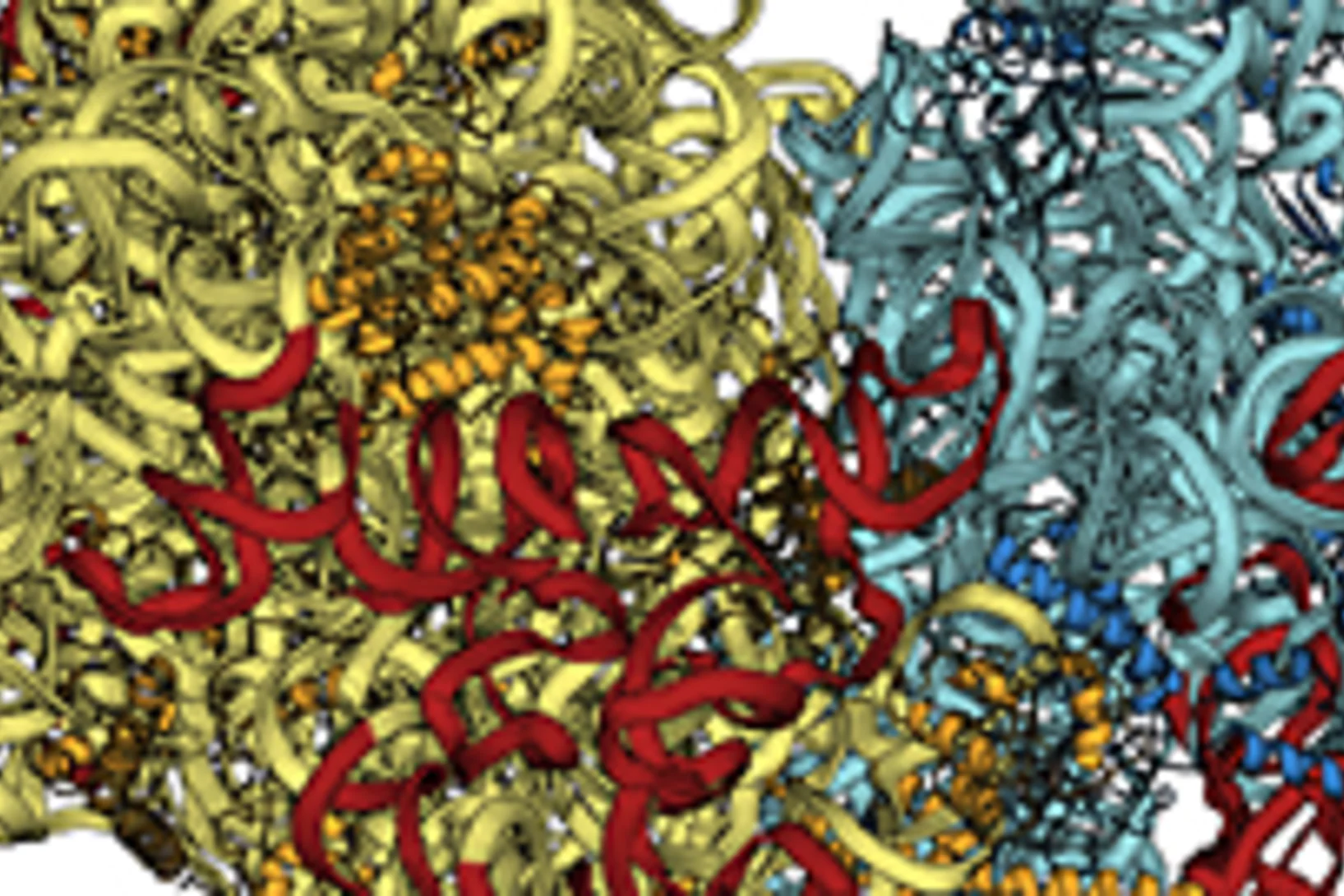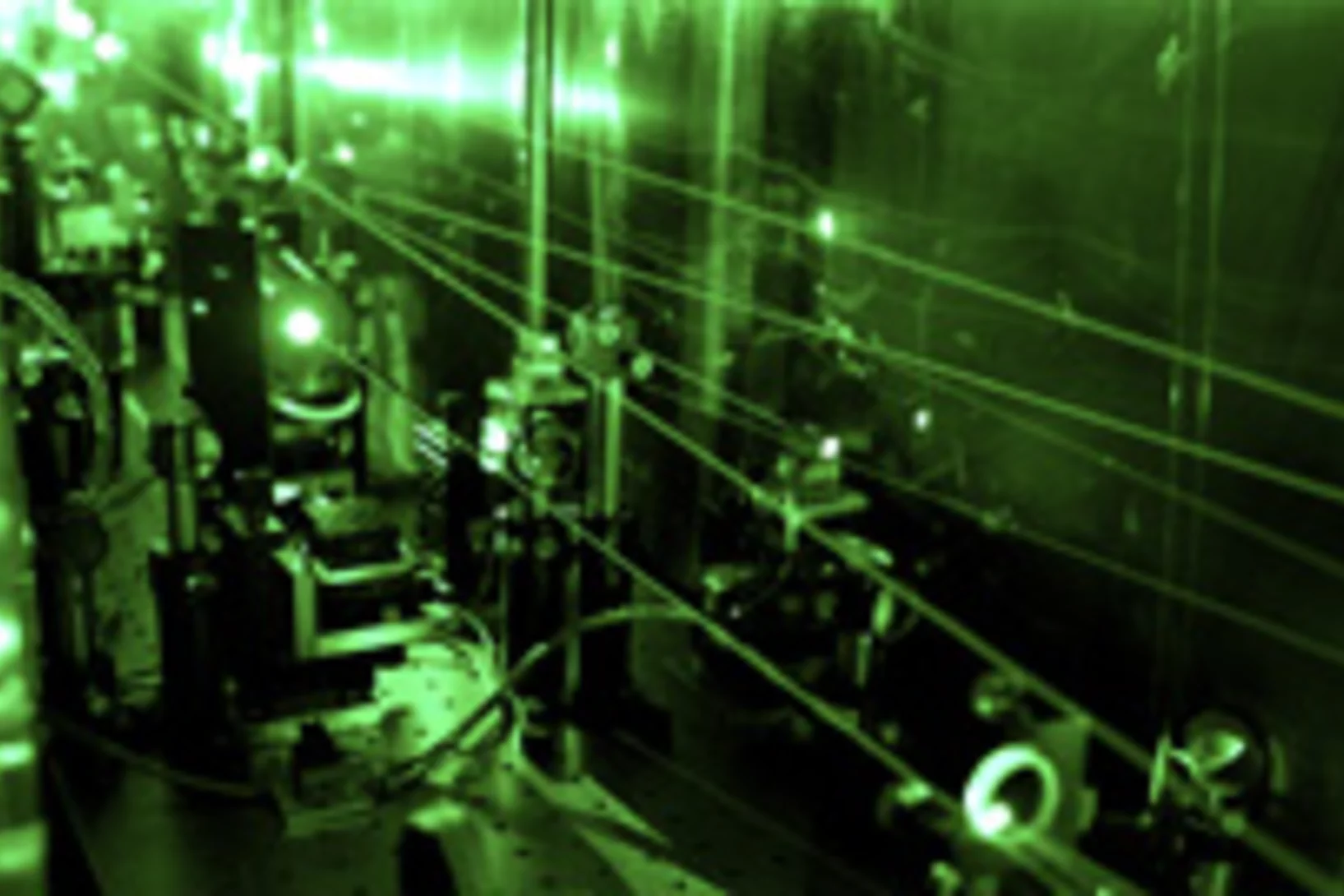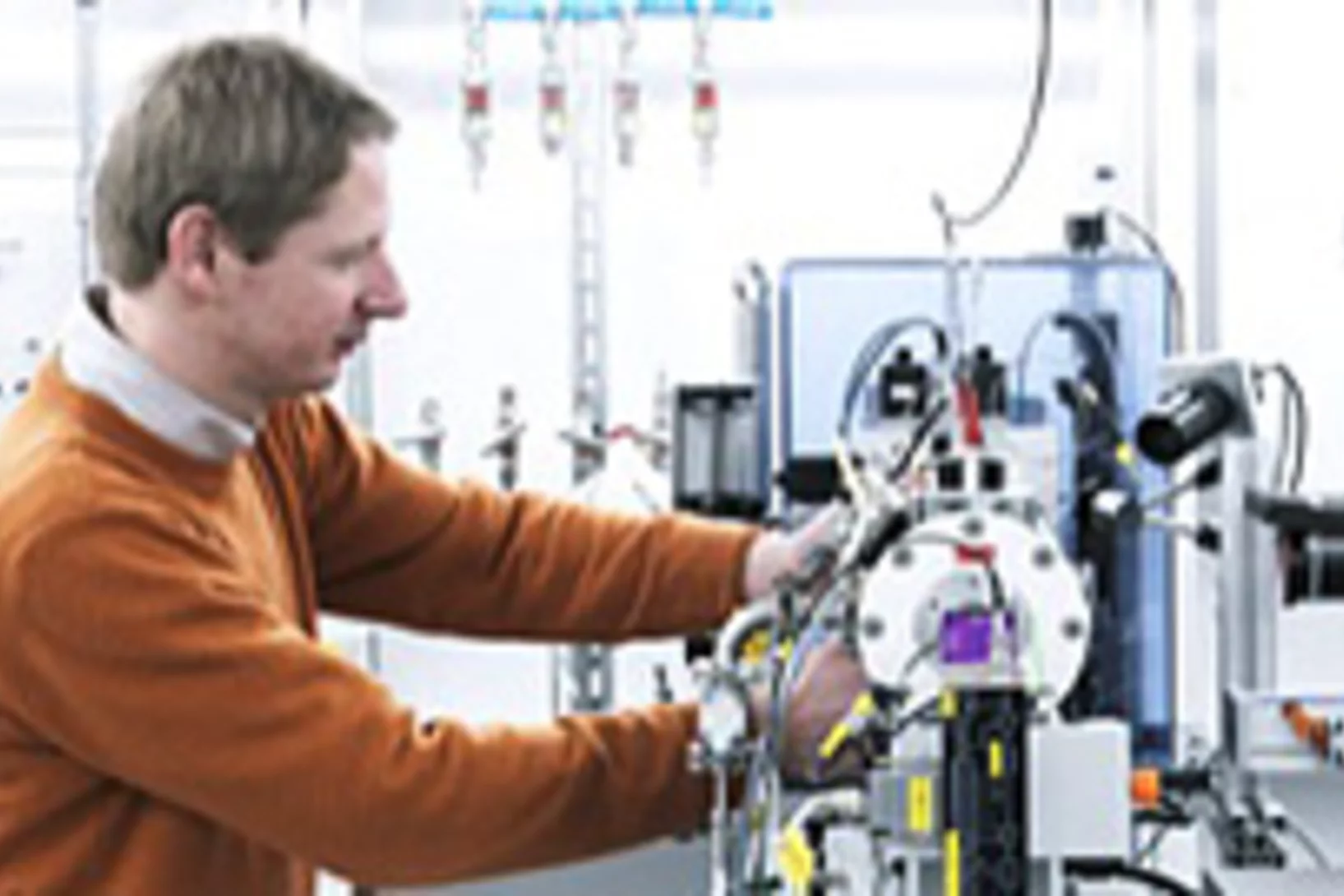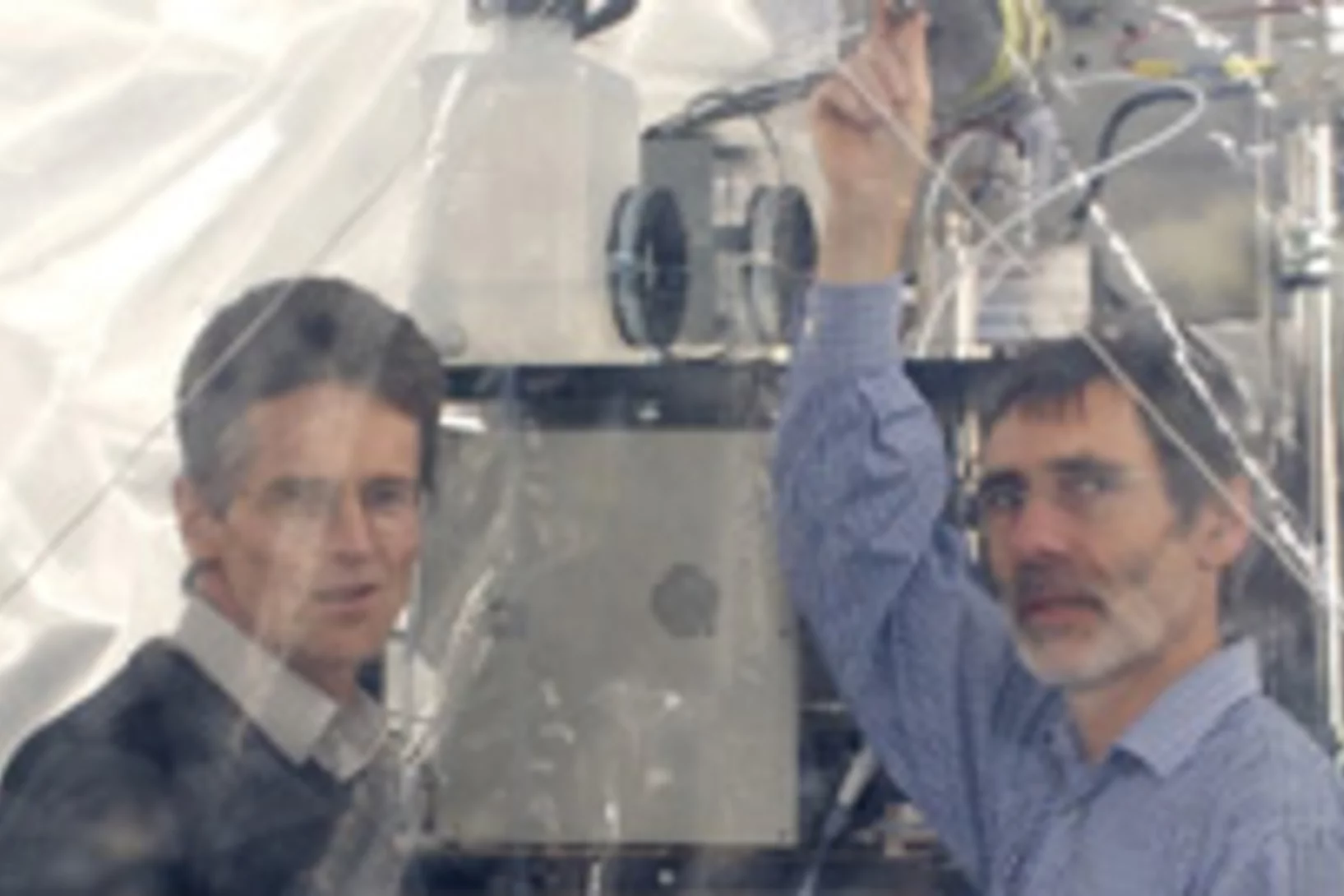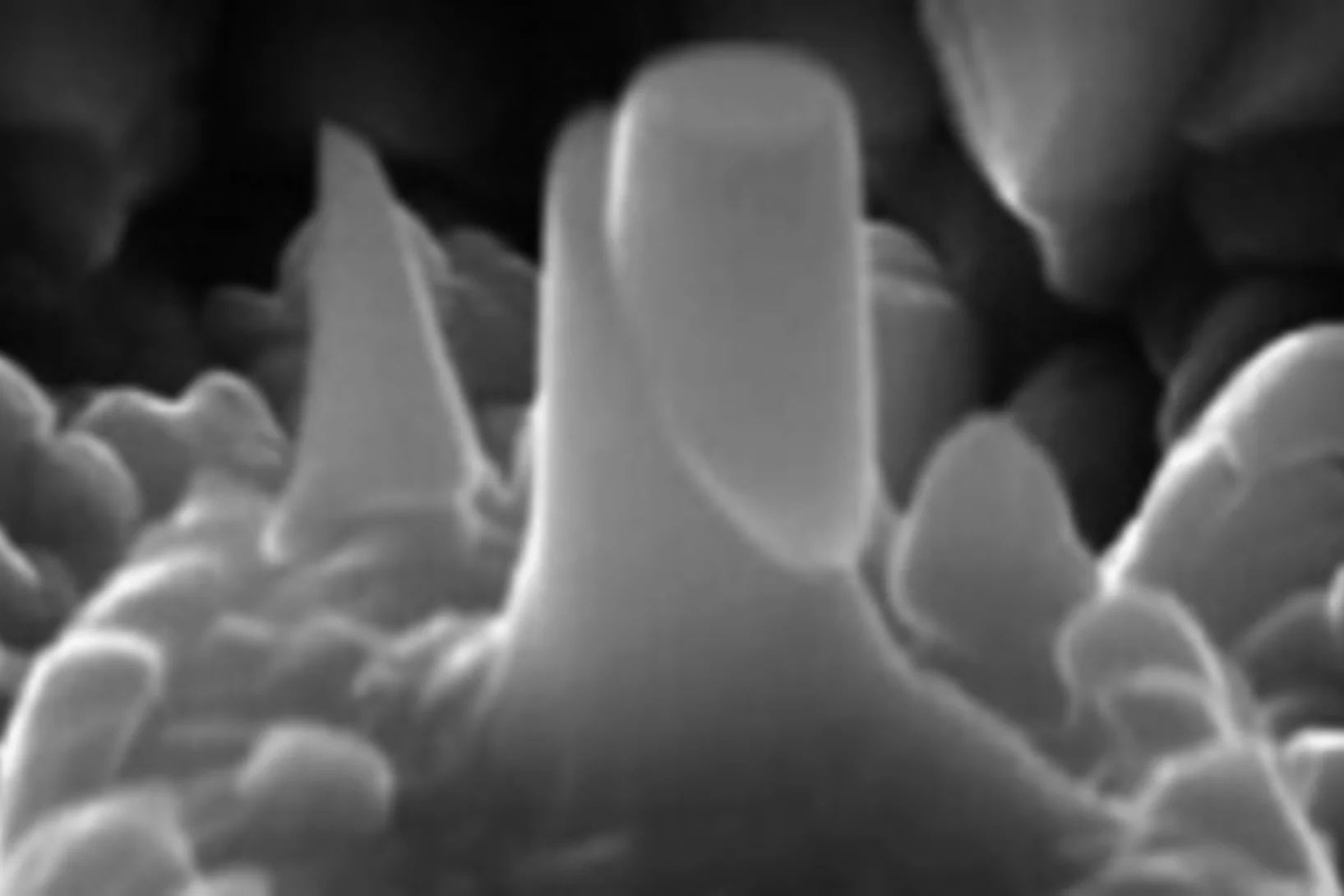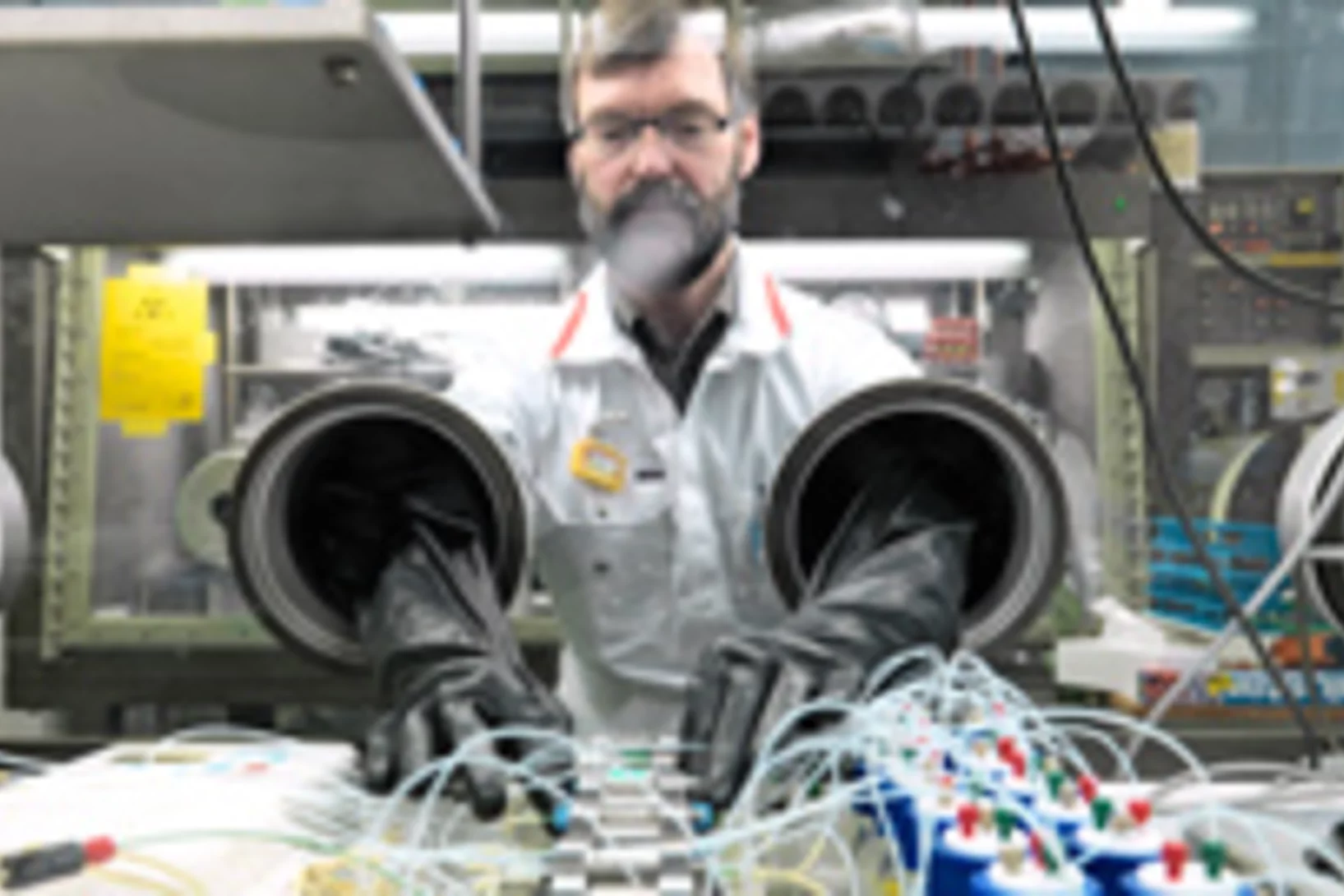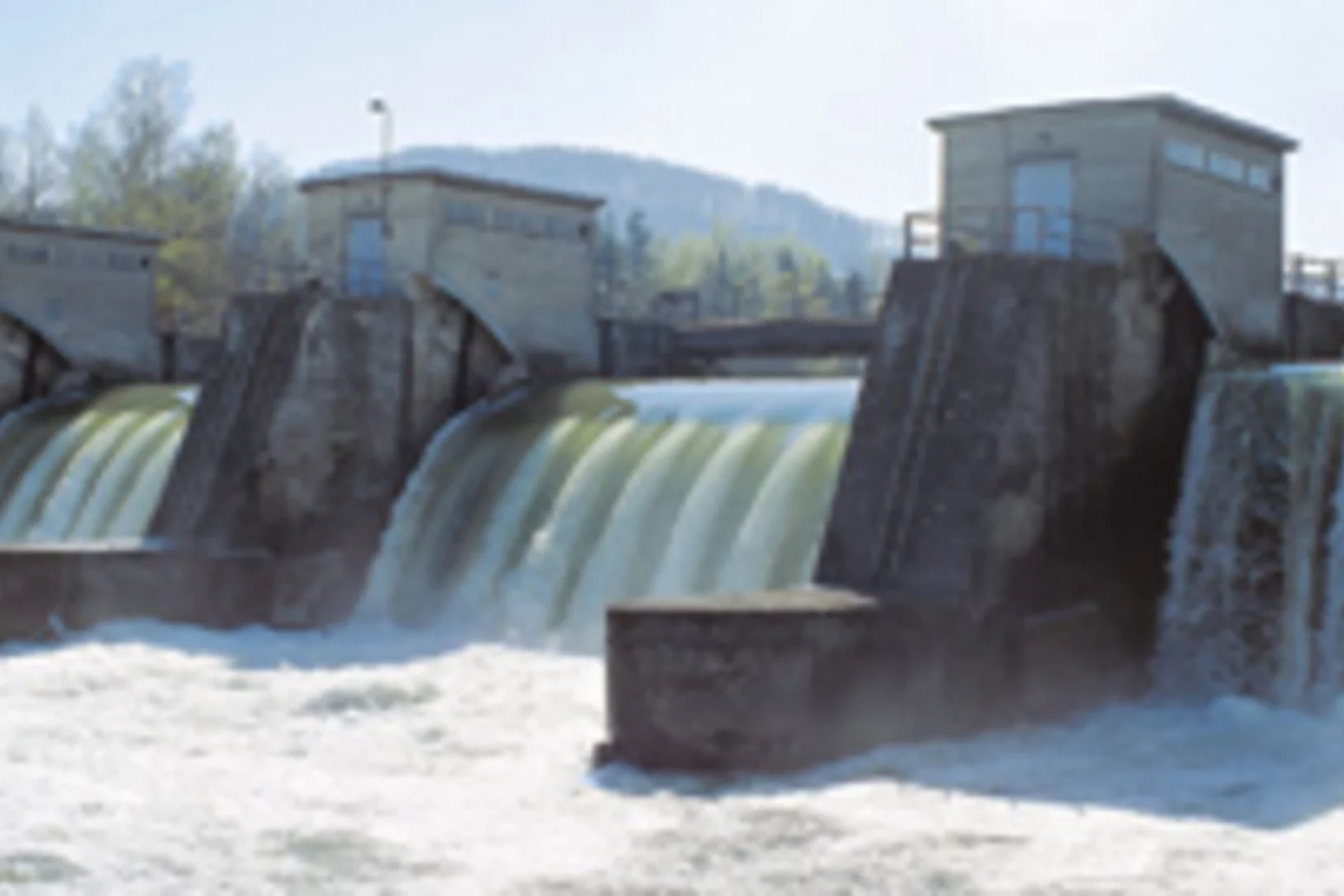Kehrichtverbrennung: Der Reinheit letzter Schluss?
Haushaltskehricht landete früher ausnahmslos unbehandelt in Deponien, die Auswirkungen dieser Praxis sind bekannt: der Standort dieser Abfall-Endlager wurde nicht selten zur ökologischen Todeszone. Mit der städtischen Kehrichtverbrennung kam eine gewisse Entschärfung dieser Problematik: Die von Deponien beanspruchten Flächen sind in den letzten Jahrzehnten trotz der insgesamt zunehmenden Abfallmengen nur dank Recycling und Abfallverbrennung in Schranken gehalten worden. Doch ein Allheilmittel ist die Abfallverbrennung noch lange nicht. Einige für die menschliche Gesundheit und die Umwelt schädliche Verbrennungsprodukte können nicht vollständig verbrannt werden und finden immer noch den Weg über die Kehrichtverbrennungsanlagen in die Endstation Deponie.
Experiments in millionths of a second
Muons à unstable elementary particles à provide scientists with important insights into the structure of matter. They provide information about processes in modern materials, about the properties of elementary particles and the nature of our physical world. Many muon experiments are only possible at the Paul Scherrer Institute because of the unique intense muon beams available here.
Scénarios pour la transformation du système électrique en Suisse
Des chercheurs de l’Institut Paul Scherrer (PSI) ont analysé l’évolution du secteur suisse de l’électricité au travers de différents scénarios, en se servant de leur modèle STEM-E. Leur conclusion : toutes les alternatives à l’approvisionnement actuel en électricité devraient entraîner une augmentation des coûts des systèmes. Il se pourrait, par ailleurs, que des concessions doivent être faites au niveau de certains objectifs relevant du développement durable, comme la protection du climat et l’indépendance de la Suisse par rapport à l’étranger en matière d’approvisionnement en énergie. L’analyse indique que d’ici 2050, les coûts de production d’électricité augmenteront probablement d’au moins 50 pour cent.
PSI-Forscher untersuchen Wege zu einem nachhaltigen Schweizer Stromsystem
Mit der Energiestrategie 2050 des Bundes steht die Schweiz vor einem radikalen Umbau ihres Energiesystems. Besonders die Versorgung mit Strom stellt eine Herausforderung dar. Um herauszufinden, welche natürlichen Ressourcen und Technologien sich für diesen Wandel am besten eignen, haben Forscher des Paul Scherrer Instituts PSI ein Modell kreiert, mit dem sie sowohl langfristige Entwicklungen als auch saisonale und tageszeitliche Schwankungen des Strombedarfs unter die Lupe nehmen.
Proton size puzzle reinforced!
An international team of scientists confirmed the surprisingly small value of the proton radius with laser spectroscopy of exotic hydrogen. The experiments were carried out at PSI which is the only research institute in the world providing the necessary amount of muons for the production of the exotic hydrogen atoms made up of a muon and a proton.
Feu et flamme
Les centrales à gaz et à vapeur, connues sous le nom de centrales à cycle combiné, figurent dans de nombreux pays européens comme l'option de la garantie d'approvisionnement en énergie. La stratégie énergétique de la Fédération helvétique pour l'année 2050 les évoque comme l'une des possibilités alternatives aux centrales nucléaires. Pour augmenter le rendement de la transformation du gaz naturel en électricité jusqu’à 60 pour cent, les centrales à cycle combiné utilisent des turbines à gaz et à vapeur d'eau. Elles se distinguent en outre par des mises en route et arrêts très rapides, ce qui les prédestine à la compensation des fluctuations de la production de parcs d'éoliennes et de centrales hélioélectriques. Mais leur émission en CO2, bien qu'elle soit moins importante que celle de toutes les centrales électriques conventionnelles à base de combustibles fossiles, est encore trop élevée. Dans le cadre d'un projet européen, les chercheurs de l'Institut Paul Scherrer travaillent à la solution de cet inconvénient.
Die schwache Seite des Protons
Ein internationales Forschungsteam hat mit grosser Genauigkeit bestimmt, wie das Proton an der schwachen Wechselwirkung à einer der vier fundamentalen Kräfte der Natur à teilhat. Die Ergebnisse bestätigen die theoretischen Voraussagen des Standardmodells der Teilchenphysik. In dem Experiment wurde beobachtet, mit welcher Wahrscheinlichkeit Myonen von Protonen eingefangen werden à ein Prozess, der von der schwachen Wechselwirkung bestimmt wird. Das Experiment wurde am Paul Scherrer Institut PSI durchgeführt, dem einzigen Ort weltweit, an dem genügend Myonen zur Verfügung stehen.
Die neue Schweizer Energiepolitik: Woher kommt der Strom?
Les responsables politiques ont établi les lignes directrices: ne plus construire de nouvelles centrales nucléaires en Suisse. Cela signifie qu’au futur 40% de la production d’électricité actuelle devront provenir d’autres sources d’énergie. Il est certain que nous devons ainsi diminuer notre consommation énergétique et utiliser d’avantage les énergies renouvelables. Et si cela ne suffisait pas? Aura-t-on besoin de centrales à gaz? Ou sera-t-on dépendants d’une électricité importée? Il s’agit là de questions que le PSI étudie attentivement au travers de scénarios énergétiques.
Two types of adjacent dimer layers in the low temperature phase of BaCuSi2O6
The interest in BaCuSi2O6 is motivated by its extraordinary phase diagram with field-induced Bose-Einstein condensation. Being a quantum paramagnet at zero magnetic field down to the lowest temperatures, the system displays a quantum phase transition into a magnetically ordered state at the critical value of magnetic field of ~23.5 T.
ETH Zurich, IBM and Paul Scherrer Institut Researchers receive 2012 PRACE Award
The MEGAWatt Pilot Experiment was operated for neutron generation with the PSI high intensity proton beam in 2006. The experiment utilized liquid target material, a lead bismuth eutectic. This marked a major milestone towards Accelerator Driven Systems (ADS), which are intended to be used for the incineration of nuclear waste.
Tournant énergétique: voir le tout, tout en tenant compte des détails
Le tournant énergétique en tant que volonté politique est réalité, mais comment la Suisse va-t-elle adapter son approvisionnement actuel en énergie aux objectifs formulés pour l’année 2050? C’est justement sur les questions de mise en oeuvre, des options possibles et des défis à relever lors de la restructuration du paysage énergétique suisse que s’est penché le Congrès sur l’Énergie, organisé le 14 mai 2012 par l’Institut Paul Scherrer. Le sujet principal était la restructuration des réseaux électriques dans un environnement d’approvisionnement énergétique de plus en plus décentralisé.
Rückhaltung von radioaktivem Jod bei einem schweren KKW-Unfall
Forscher des Paul Scherrer Instituts PSI haben ein effizientes Filterverfahren für radioaktives Jod entwickelt. Dieses entfernt Jod praktisch vollständig aus der radioaktiv verunreinigten Abluft, bevor diese nach einer Kernschmelze aus dem havarierten Kernkraftwerk an die Umwelt abgegeben wird. Das Verfahren steht für den Einsatz in Kernkraftwerken weltweit bereit, nachdem das PSI und das Industrieunternehmen CCI AG (Balterswil/TG) kürzlich eine Lizenzvereinbarung für das vom PSI patentierte Verfahren unterzeichnet haben.
Physicists observe the splitting of an electron inside a solid
An electron has been observed to decay into two separate parts, each carrying a particular property of the electron: a spinon carrying its spin à the property making the electron behave as a tiny compass needle à and an orbiton carrying its orbital moment à which arises from the electron’s motion around the nucleus. These newly created particles, however, cannot leave the material in which they have been produced.
Physicists observe the splitting of an electron inside a solid
An electron has been observed to decay into two separate parts, each carrying a particular property of the electron: a spinon carrying its spin – the property making the electron behave as a tiny compass needle – and an orbiton carrying its orbital moment – which arises from the electron’s motion around the nucleus. These newly created particles, however, cannot leave the material in which they have been produced.
Magnetisieren braucht mehr Zeit als Entmagnetisieren
Forscher am Paul Scherrer Institut finden heraus, wie lange der Aufbau von Magnetismus in einem Metall dauert und wie der Vorgang abläuft Wenn die Metalllegierung Eisen-Rhodium magnetisiert wird, dauert dieser Prozess deutlich länger als der gegenläufige Vorgang der Entmagnetisierung. Diese Erkenntnis haben Forscher des Paul Scherrer Instituts zusammen mit einem internationalen Forscherteam gewonnen. Die Erkenntnisse aus der Grundlagenforschung sind relevant für die Computerindustrie: Sie zeigen, welche Prozesse die Eigenschaften magnetischer Datenspeicherung begrenzen und wo es Potential für Verbesserung gibt.
Structural and magnetic dynamics of a first order phase transition
We use time-resolved x-ray diffraction and magneto-optical Kerr effect to study the laser-induced antiferromagnetic to ferromagnetic phase transition in FeRh. The structural response is given by the nucleation of independent ferromagnetic domains (t ~ 30 ps).
Fossile Vorläufer der ersten Tiere
Einzellige Organismen, die vor über einer halben Milliarde Jahre gelebt haben und deren Fossilien in China gefunden wurden, sind wohl die unmittelbaren Vorläufer der frühesten Tiere. Die amöbenartigen Einzeller haben sich in einer Weise in zwei, vier, acht usw. Zellen geteilt, wie es heute tierische (und menschliche) Embryonen tun. Die Forscher glauben, dass diese Organismen einem der ersten Schritte vom Einzeller zum Vielzeller in der Entwicklung richtiger Tiere entsprechen.
CCN formation mechanism in lower troposphere needs revision
Atmospheric aerosols exert an important influence on climate1 through their effects on stratiform cloud albedo and lifetime and the invigoration of convective storms. Model calculations suggest that almost half of the global cloud condensation nuclei in the atmospheric boundary layer may originate from the nucleation of aerosols from trace condensable vapours, although the sensitivity of the number of cloud condensation nuclei to changes of nucleation rate may be small. Despite extensive research, fundamental questions remain about the nucleation rate of sulphuric acid particles and the mechanisms responsible, including the roles of galactic cosmic rays and other chemical species such as ammonia. Here we present the first results from the CLOUD experiment at CERN.
Klimaforschung am Teilchenbeschleuniger: Beschreibung der Aerosolneubildung muss revidiert werden
Vom Menschen verursachte Aerosole wirken in der Atmosphäre kühlend: Klimaforscher nehmen an, dass sie einen Grossteil des anthropogenen Treibhauseffekts kompensieren. Allerdings müssen sich die Partikel zum Teil in der Atmosphäre erst neu bilden. Diesen bisher kaum untersuchten Prozess nimmt das CLOUD-Experiment am CERN, an dem auch Forscher des Paul Scherrer Instituts beteiligt sind, unter die Lupe. Dabei wurde erstmals ein Teilchenbeschleuniger für die Untersuchung von Vorgängen in der Atmosphäre eingesetzt. Die Ergebnisse zeigen: die Beschreibungen der Aerosolbildung in Klimamodellen muss revidiert werden.
The electron torus can help us to understand high-temperature superconductors
Paul Scherrer Institute researchers prove, for the first time, the existence of toroidal currents in solids
Quelle est la force de la force faible ?
Une nouvelle mesure de la durée de vie du muon à qui est la détermination la plus précise de la durée de vie dans le monde des particules élémentaires à donne une valeur de haute précision d’un paramètre capital pour déterminer l’intensité de la force nucléaire faible. Les expériences ont été menées sur les accélérateurs de l’Institut Paul Scherrer par une équipe de recherche internationale.
Understanding the nanomachines of life
Ribosomes are the protein factories of the living cell and themselves very complex biomolecules. Now, a French research group has for the first time determined the structure of the ribosome in a eukaryotic cell à a complex cell containing a cell nucleus. An important part of the experiments was performed with synchrotron light at the Swiss Light Source SLS of the Paul Scherrer Institute.
Protons - smaller than we thought
The proton à one of the smallest building-blocks of all matter à is even smaller than had previously been assumed. This discovery is the result of experiments carried out at the Paul Scherrer Institute (PSI) in Villigen, Switzerland, by an international research team.
Schweizer Energieforschung im europäischen Verbund
Paul Scherrer Institut beteiligt sich an europäischer Energieforschungsallianz: Wege zu einer nachhaltigen Energieversorgung zu entwickeln gehört zu den dringendsten technischen Herausforderungen der Gegenwart.
Des nouvelles de la chambre à smog: les mécanismes de formation de particules dans l'atmosphère enfin décodés
Jusqu'à présent, la nucléation ou formation de particules dans l'atmosphère restait une énigme. Jusqu'à très récemment, les chercheurs pensaient que l'acide sulfurique était le facteur principal dans la formation des particules. Cependant, les analyses effectuées sur le terrain et en laboratoire ont toujours fourni des résultats contradictoires: on observait que les concentrations en acide sulfurique nécessaires à l'occurrence de la nucléation étaient nettement plus élevées en laboratoire que sur le terrain. Grâce à une expérience menée dans la chambre à smog, les chercheurs de l'Institut Paul Scherrer (PSI) ont trouvé l'origine de ces résultats contradictoires. Leur découverte constitue ainsi une avancée décisive dans la recherche sur le climat.
Des matériaux fiables pour les réacteurs nucléaires
Les matériaux employés dans les centrales nucléaires sont soumis à des exigences élevées. Les standards de sécurité en matière de sélection, d'utilisation et de surveillance des matériaux sont donc très élevés. Le PSI analyse le comportement et le vieillissement d’éléments utilisés dans ces installations. Ainsi, les chercheurs étudient l'importance des phénomènes de corrosion de fissure sous contrainte ou les effets de l’irradiation par des particules énergétiques sur la durabilité des matériaux.
Un stockage final sûr – étude du contexte spécifiquement suisse
Les déchets radioactifs produits par les centrales nucléaires ou issus de la médecine, de l'industrie et de la recherche doivent être isolés de l'environnement et de l'espace vital de l'Homme pendant de très longues périodes. Les experts du PSI se penchent depuis des années sur les questions scientifiques relatives à la sécurité des dépôts de stockage géologique définitif. La recherche effectuée au PSI se concentre principalement sur les phénomènes physico-chimiques ayant lieu dans les dépots de stockage définitif. L'objectif est de réaliser une description réaliste des risques liés au stockage des déchets radioactifs.
Structures et incidences des systèmes énergétiques nationaux et internationaux – les objectifs climatiques pour la Suisse
L'institut Paul Scherrer analyse les structures et les incidences des systèmes énergétiques nationaux et internationaux. Une étude dans laquelle le PSI a émis des recommandations sur ce que pourraient être les objectifs climatiques nationaux de la Suisse a ainsi été menée en 2007. Cette étude a également présenté les faits sur lesquels repose le système énergétique suisse, ainsi que les objectifs qui pourraient être atteints. La protection du climat est l'un des domaines les plus importants de la politique énergétique nationale des prochaines années. D'ici 2050, il est prévu de réduire les émissions de CO2 de la Suisse d'au moins 50 %. Dans ce contexte, une meilleure efficacité énergétique s'impose, mais elle n'est pas à elle seule déterminante.



